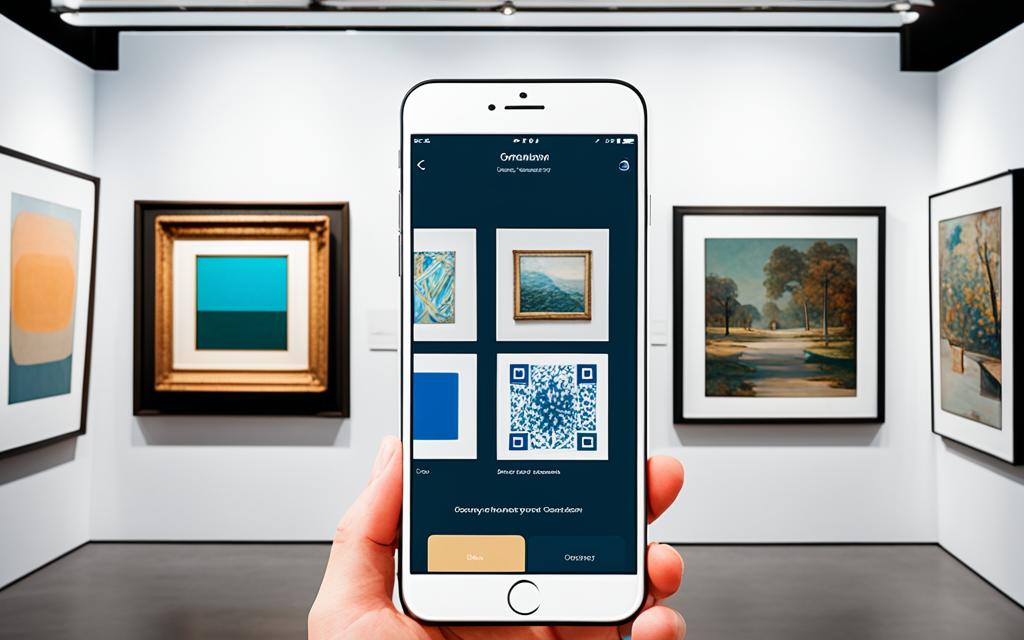Mobile apps have revolutionized the way art and antique collectors engage with their passion. These exclusive mobile apps offer a range of features and enhanced experiences tailored specifically to the needs of collectors. Through seamless integration of technology and tradition, these apps provide innovative solutions for managing collections, enriching the art and antique market, and even incorporating augmented reality for a glimpse into the future of collecting.
Key Takeaways:
- Mobile apps have transformed the art and antique collecting experience, offering exclusive features and innovative solutions for collectors.
- Collector apps revolutionize collection management, making it easier for collectors to organize, track, and manage their collections.
- Mobile apps enrich the art and antiques market by connecting collectors with a wider range of artworks and artifacts from around the world.
- Augmented reality features in collector apps provide an immersive and interactive collecting experience.
- Developers utilize emerging mobile technologies, such as AI and machine learning, to enhance functionality and user experience in collector apps.
The Intersection of Tech and Tradition: Mobile Apps for Collectors
Mobile apps have revolutionized collection management for art and antique collectors. Innovative software solutions provide collectors with tools to efficiently organize and catalog their collections, track acquisitions, manage inventory, and more. These apps offer features like customizable databases, inventory tracking, image recognition technology, and cloud storage capabilities, making it easier than ever for collectors to manage their prized possessions.
Mobile apps are playing a crucial role in enriching the art and antiques market by providing collectors with access to a wider range of artworks and artifacts. These apps connect collectors with galleries, auction houses, and private sellers, allowing them to discover and acquire unique pieces from around the world. Additionally, mobile apps offer features like virtual exhibitions, curated collections, and expert insights, enhancing the overall collecting experience and fostering a sense of community among collectors.
Augmented reality (AR) features are pushing the boundaries of collector apps, offering users a glimpse into the future of collecting. With AR technology, collectors can virtually place artworks or artifacts in their own spaces, allowing them to visualize how pieces would look in their homes or galleries. These features also enable interactive experiences, such as virtual tours of exhibitions or the ability to view hidden details or layers of artwork. Augmented reality is transforming the way collectors engage with and appreciate art and antiques, bringing a new level of immersion and interactivity to the collecting experience.
Mobile App Development and Trends in the Collecting Sphere
Mobile app developers in the collecting sphere are constantly adapting to emerging mobile technologies in order to create cutting-edge collector apps. By incorporating technologies like artificial intelligence, machine learning, Internet of Things (IoT), and blockchain, these developers enhance the functionality and user experience of their apps. They prioritize creating seamless and intuitive interfaces, optimizing app performance, and ensuring compatibility across a variety of devices and operating systems.
Adapting to Emerging Mobile Technologies in App Design
In the ever-evolving world of mobile app development, developers for collector apps are quick to embrace the latest trends. They utilize chatbots to provide personalized assistance to collectors, employ voice recognition for convenient hands-free interaction, implement biometric authentication for enhanced security measures, and offer cloud-based storage for easy access to collections across different devices. By utilizing these trends, developers create apps that cater to the specific needs and preferences of collectors, providing them with a seamless and enriching collecting experience.
Utilizing Latest Mobile App Development Trends for Collector Apps
One of the most prominent trends in the collecting sphere is the rise of artificial intelligence (AI). AI-driven algorithms analyze collectors’ preferences, historical data, and market trends to provide tailored recommendations, suggest potential acquisitions, and offer valuable insights for valuation purposes. The integration of AI into collector apps transforms the way collectors curate and interact with their personal collections, making the process more efficient and personalized.
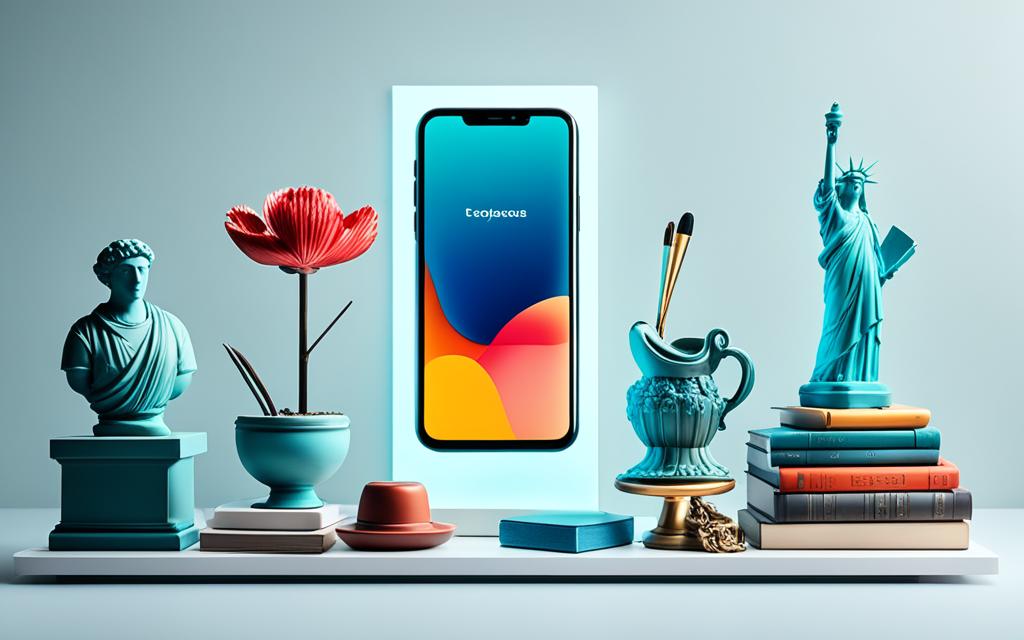
Optimizing the Collector’s Experience with User-Centric App Design
User-centric app design plays a crucial role in enhancing the overall collector app user experience. Designers prioritize intuitive navigation, seamless functionality, and visually appealing interfaces to ensure that collectors can easily browse, search, and interact with their collections. By focusing on the user experience, app designers create engaging and user-friendly interfaces that optimize the collecting process and make it more enjoyable.
In user-centric app design, personalization features are key. By incorporating customizable dashboards and notifications, collectors can tailor the app to their specific preferences and interests. Personalization enhances the app’s functionality and allows collectors to create a unique and personalized experience that aligns with their collecting goals. With personalized dashboards, collectors can have quick access to their favorite collections, upcoming auctions, or featured pieces, reducing the time spent searching for specific items and enhancing the efficiency of the app.
Intuitive navigation is another important aspect of user-centric design. Collectors should be able to easily find and access their collections, manage inventory, and engage with additional features. By implementing clear and logical navigation menus, designers ensure that collectors can quickly and effortlessly navigate the app, enabling a seamless and efficient collecting journey.
Visually appealing interfaces are essential for creating a captivating user experience. High-quality images and well-organized layouts allow collectors to visually appreciate their collections and easily explore different pieces. Visual excellence can be enhanced by implementing features like zoom and rotate functionalities, enabling collectors to examine the fine details and craftsmanship of their acquisitions. These visual enhancements create a more immersive and engaging experience for collectors.
User-centric app design is a fundamental element in providing collectors with an optimized and enjoyable app experience. By prioritizing intuitive navigation, seamless functionality, personalized features, and visually appealing interfaces, app designers can create engaging, user-friendly interfaces that enhance the overall collecting experience for collectors.
Aspects of Security and Privacy in Collector-Oriented Apps
In the ever-evolving world of mobile app development, ensuring the security and privacy of user data is of paramount importance. For collector-oriented apps, where valuable collections and personal information are at stake, implementing best practices for user data protection is crucial. Developers need to establish trust and confidence in collectors by prioritizing security throughout the app development process.
Best Practices for Protecting User Data in the App Development Process
When developing collector apps, it is essential to incorporate industry-standard security measures to safeguard user data. Here are some best practices to consider:
- Secure Authentication Methods: Implement strong authentication protocols, such as multi-factor authentication or biometric authentication, to ensure that only authorized users have access to the app and its data.
- Data Encryption Techniques: Utilize encryption algorithms to protect sensitive data both in transit and at rest. Encryption adds an extra layer of security by encoding information, making it unreadable to unauthorized users.
- Regular Security Audits: Conduct regular security audits and vulnerability assessments to identify and address any potential security flaws or weaknesses in the app.
- Compliance with Privacy Regulations: Adhere to applicable privacy regulations, such as the General Data Protection Regulation (GDPR) or the California Consumer Privacy Act (CCPA), to ensure that user data is handled in accordance with legal requirements.
By following these best practices, app developers can mitigate the risk of data breaches, unauthorized access, or misuse of collector app users’ valuable information.
The Role of Blockchain Technology in Securing Transactions
With the rise of blockchain technology, securing transactions in collector apps has become more efficient and trustworthy. Blockchain provides a decentralized and transparent system that records and verifies transactions, ensuring their integrity and preventing unauthorized alterations.
By incorporating blockchain technology into collector apps, secure and transparent transactions can be facilitated. Here’s how it works:
- Immutable Transaction Records: Blockchain technology enables the creation of a secure and immutable record of transaction history, establishing a reliable trail of provenance and ownership for art and artifacts.
- Fraud Prevention: The decentralized nature of blockchain eliminates the risk of fraud and counterfeiting, as transactions are verified by a network of computers, making it nearly impossible for malicious actors to manipulate or forge records.
- Enhanced Trust: By leveraging blockchain, collector apps foster trust and confidence among collectors, as they can verify the authenticity and legitimacy of transactions, ensuring that they are engaging in secure and legitimate buying, selling, or trading activities.
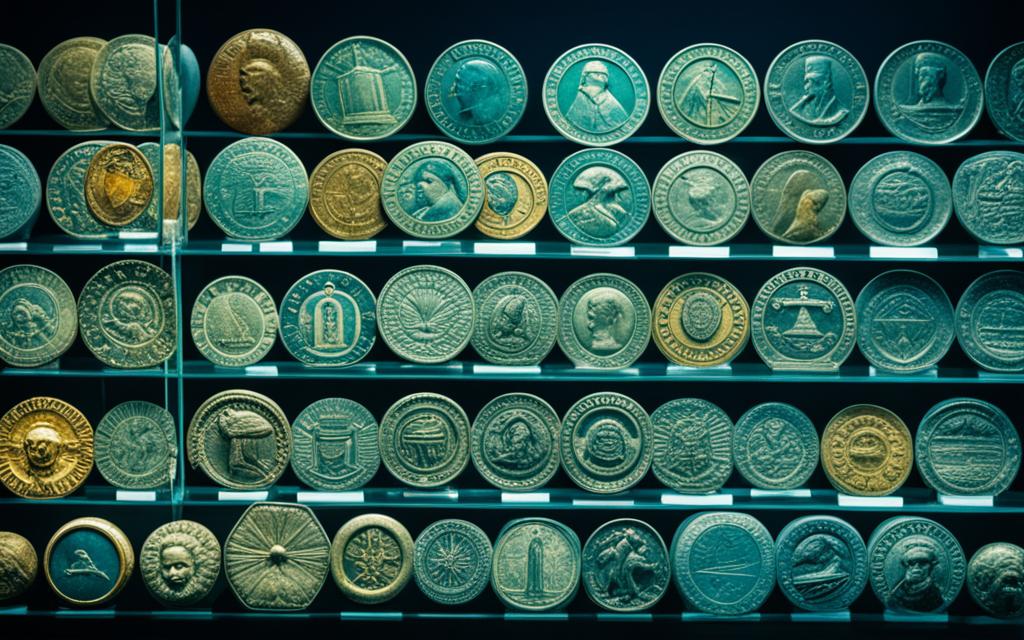
By embracing blockchain technology, collector apps provide a secure and transparent environment for collectors to engage in transactions, eliminating concerns about data breaches, counterfeit artworks or artifacts, and fraudulent activities.
Tailored Features: The Core of Successful Collectors’ Apps
The success of collector apps lies in their ability to offer tailored features that cater to the specific needs and desires of collectors. These features are designed to enhance the overall collecting experience and provide valuable tools for managing and organizing collections. By incorporating tailored features, collector apps become invaluable resources for collectors, helping them make informed decisions, connect with fellow enthusiasts, and explore the art and antique world in a seamless and personalized manner.
One example of a tailored feature is customizable databases. Collector apps allow users to create databases that align with their specific collecting goals and interests. This functionality enables collectors to categorize and organize their collections based on criteria such as artist, period, or medium, providing a comprehensive overview of their acquisitions. With a customizable database, collectors can easily search for specific pieces within their collection and track the growth and evolution of their portfolio.
Advanced search and filtering options are another crucial tailored feature in collector apps. These options allow collectors to refine their search based on various parameters, such as price range, location, or provenance. By narrowing down search results, collectors can quickly find pieces that align with their preferences and budget, saving them time and enhancing their overall browsing experience.
Collaboration tools are also essential tailored features in collector apps. These tools enable collectors to connect and share their collections with fellow enthusiasts, fostering a sense of community and providing opportunities for collaboration and knowledge exchange. Collectors can engage in discussions, share insights and discoveries, and even collaborate on exhibitions or acquisitions. Collaboration tools enrich the collecting experience by fostering connections among collectors and creating a supportive network within the art and antique community.
Integrated valuation tools are another indispensable tailored feature in collector apps. These tools leverage market data, expert insights, and historical sales information to offer collectors accurate and up-to-date valuations of their art and antique pieces. Collectors can use these tools to assess the current value of their collections, track their investment growth, and make informed decisions when buying or selling. By incorporating integrated valuation tools, collector apps empower collectors with valuable information and insights, helping them navigate the art market with confidence.
Expert insights are a final key tailored feature in collector apps. These insights provide collectors with access to expert opinions, curatorial advice, and historical context, enriching the collecting experience and deepening their understanding of the art and antique world. By incorporating expert insights, collector apps bridge the gap between collectors and industry professionals, offering a curated and educational experience that goes beyond mere acquisition.
Ensuring Accessibility: Mobile App Design for Every Collector
Creating an inclusive user interface is essential in mobile app design for collector apps. Designers must consider accessibility features to ensure that the app can be used by collectors with diverse abilities and needs. By implementing these features, mobile apps can provide a seamless and enjoyable user experience for all collectors, regardless of their technological proficiency.
Creating an Inclusive User Interface with Mobile App Design Tips
In order to make collector apps accessible to a wide range of users, designers should incorporate the following mobile app design tips:
- Adjustable font sizes: Allow users to customize the font size to their preference, ensuring readability for individuals with visual impairments.
- High contrast options: Provide color schemes with high contrast ratios to enhance visibility for users with low vision.
- Voice-guided navigation: Implement voice commands or voice-assisted features to assist users with limited mobility or visual impairments in navigating the app.
- Clear navigation menus: Design intuitive and user-friendly navigation menus that are easy to understand and navigate, ensuring a seamless user experience.
- Descriptive icons: Use icons that are visually descriptive and accompanied by text or tooltips for users who may have difficulty interpreting visual cues.
- Organized layouts: Structure app layouts in a logical and organized manner, ensuring that content is easily accessible and comprehensible to all users.
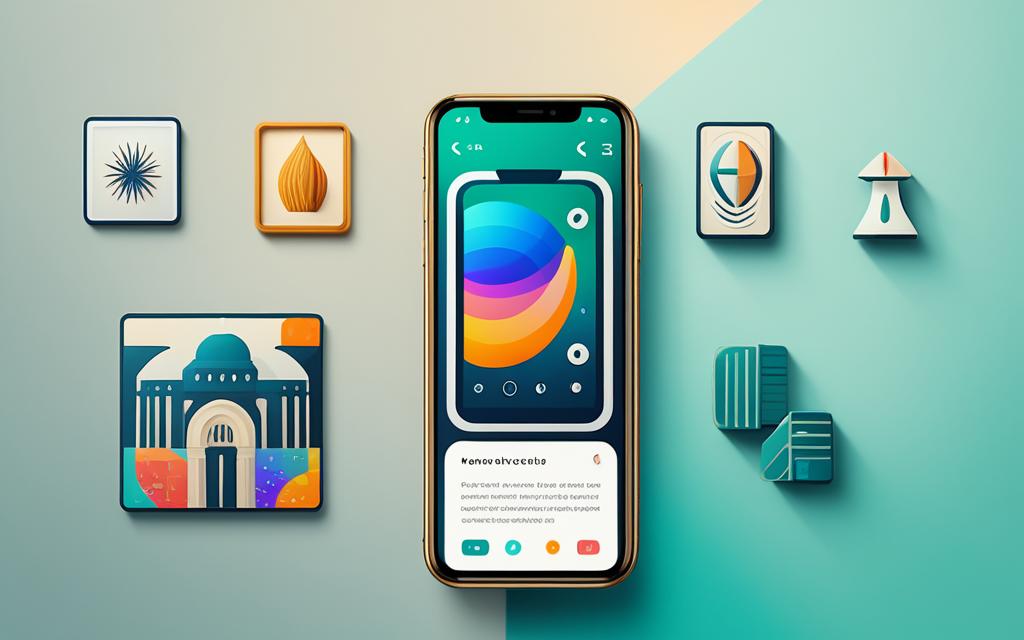
Supporting Diverse Platforms with Cross-Platform Development Strategies
Cross-platform development is essential for ensuring widespread access to collector apps. By building apps that are compatible with multiple operating systems and devices, collectors can seamlessly transition between their smartphones, tablets, and desktop computers without sacrificing functionality or user experience.
Implementing cross-platform development strategies offers several benefits:
- Maximized reach: By supporting diverse platforms, collector apps can cater to a wider audience of art and antique enthusiasts, increasing user engagement and adoption.
- Reduced development time and cost: Building apps for multiple platforms using frameworks like React Native or Flutter can significantly reduce development time and cost compared to developing separate native apps for each platform.
- Consistent user experience: Cross-platform development allows for consistent user experiences across different devices, ensuring a seamless transition and intuitive navigation for collectors.
- Efficient maintenance and updates: With cross-platform development, app updates and maintenance can be streamlined, with changes applied to all platforms simultaneously, ensuring a consistent experience for users.
By embracing cross-platform development, collector apps can break down barriers and provide a seamless experience for collectors on any device or operating system.
Evaluating the Impact of Social Features in Collector Apps
Social features in collector apps are instrumental in fostering community engagement and connecting collectors with like-minded individuals. By integrating social media platforms, these apps enable collectors to share their collections, discoveries, and insights with a wider audience.
Integrating Social Media to Foster Community Engagement
The integration of social media in collector apps allows collectors to interact, form connections, and foster a sense of community. Features such as commenting, liking, and following enable collectors to engage with each other, collaborate on projects, and share their passion for art and antiques. Through social media integration, these apps create a vibrant and supportive community of art and antique enthusiasts, enhancing the overall collecting experience.
“Collector apps provide a platform for art and antique enthusiasts to connect, collaborate, and share their passion with like-minded individuals.”
Using Push Notifications to Keep Collectors Informed and Active
Push notifications have become a powerful tool in collector apps to keep collectors engaged and informed. These real-time updates notify collectors about new acquisitions, upcoming auctions, app updates, and community events, providing them with timely information that keeps their interest and enthusiasm high.
Push notifications act as reminders and prompts, encouraging collectors to explore their collections, participate in auctions or events, and discover new pieces of art and antiques. By strategically utilizing push notifications, collector apps enhance user engagement and keep collectors connected to the dynamic world of art and antiquities.
Table: Comparing the Impact of Social Features and Push Notifications in Collector Apps
| Features | Benefits |
|---|---|
| Social Features |
|
| Push Notifications |
|
Artificial Intelligence and Machine Learning Elevation in Collector Apps
Artificial intelligence (AI) and machine learning (ML) are revolutionizing the capabilities of collector apps, providing collectors with intelligent features and personalized experiences. Through AI-powered algorithms, these apps can analyze collectors’ preferences, offer tailored recommendations, predict market trends, and curate personalized collections. The integration of machine learning allows these algorithms to continuously learn and adapt based on user interactions and feedback, enhancing the accuracy and relevance of personalized recommendations.
Collector apps that leverage AI and ML become intelligent companions for collectors, guiding them on their collecting journey and enabling new discoveries. By harnessing the power of these technologies, collectors can delve deeper into their passion and uncover hidden gems. Whether it’s suggesting artworks based on a collector’s taste or providing insights into emerging artists and trends, these intelligent features elevate the collector’s experience and foster a deeper connection between collectors and their collections.
With AI and ML at the forefront of collector app development, users can expect a more intuitive and personalized collecting experience. From virtual assistants that assist with collection management to algorithms that uncover hidden connections and recommendations, these intelligent technologies open up new possibilities for collectors. As AI continues to advance, collector apps will undoubtedly continue to evolve, providing collectors with even more intelligent, dynamic, and enriching experiences.

Presentation is Key: Visual Excellence in Mobile Apps for Artifacts
When it comes to mobile apps for art and artifact collectors, visual excellence takes center stage. These apps are designed to showcase the beauty and intricacies of the objects being collected, providing collectors with immersive experiences. App designers prioritize creating visually stunning interfaces that do justice to the art and artifacts being showcased.
In these collector apps, high-resolution images play a crucial role in capturing the fine details and craftsmanship of the acquisitions. Through features like zoom and rotate functionalities, collectors can examine objects in detail, mimicking the experience of physically interacting with them. This level of visual immersion enhances the overall collecting experience, allowing collectors to appreciate the art and artifacts in all their glory.
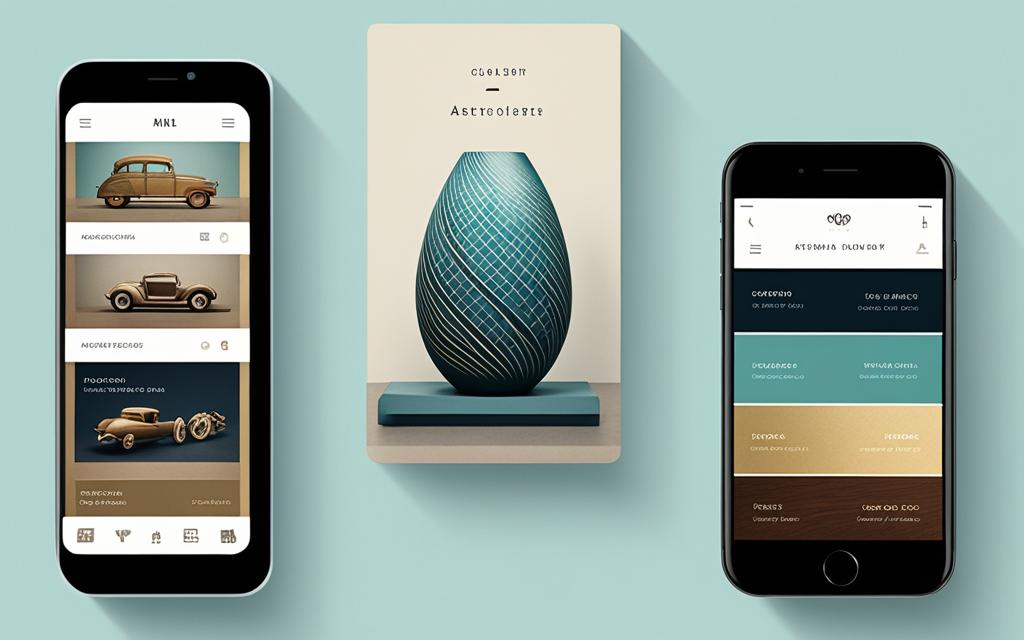
In addition to high-quality images, these mobile apps offer visually engaging interfaces that make browsing and exploring collections a pleasurable experience. The use of intuitive layouts, appealing color schemes, and elegant typography further contribute to the visual excellence of these apps.
Moreover, user-friendly design choices enable easy navigation and interaction with the app, making it a joy to browse through a curated collection or explore new acquisitions. With the combination of visually stunning interfaces and seamless functionality, mobile apps for artifacts elevate the presentation of art and antiques in the digital realm.
Collector apps provide a platform where art and artifact enthusiasts can appreciate the fine details and historical significance of their collections. Through the careful integration of visual excellence, these apps enhance the overall collecting experience and inspire collectors to delve deeper into their passion.
Profitability and Monetization Strategies for Collector Apps
Understanding the App Development Market Trends for Monetization
Monetizing collector apps requires a deep understanding of the current app development market trends. To ensure profitability, developers must identify sustainable revenue streams that align with the expectations and preferences of collectors. By staying informed about the latest market trends, developers can make informed decisions that maximize the long-term success of their apps.
One popular strategy for monetizing collector apps is the adoption of freemium models. These models offer basic app functionalities for free, while premium features or content come at a cost. Freemium models allow collectors to experience the app’s core functionalities before deciding to unlock additional features through in-app purchases.
Developers can also explore partnerships with galleries and auction houses to generate revenue. Collaborations can take the form of sponsored content, exclusive access to limited edition artworks or artifacts, or promoting special events or auctions within the app.
Premium Features vs. Subscription Models: What Works Best for Collectors?
When it comes to choosing between premium features and subscription models, developers must consider several factors. Premium features offer collectors the option to unlock additional functionalities or exclusive content through one-time payments. This model appeals to collectors who have specific needs or preferences and are willing to make one-time investments to enhance their app experience.
Subscription models, on the other hand, provide collectors with access to a comprehensive set of features and services for a recurring fee. This model is ideal for collectors who prefer a continuous and evolving experience, allowing them to enjoy all available features and receive regular updates and exclusive content.
The choice between premium features and subscription models depends on the target audience, the app’s value proposition, and the collector community’s willingness to pay. By carefully considering these factors, developers can tailor their monetization strategies to meet the diverse preferences and needs of collectors, maximizing the revenue potential of their apps.
From Novice to Aficionado: Educational Tools Within Collector Apps
Collector apps are capitalizing on mobile app trends by integrating educational tools and content to cater to new collectors. These educational features can include interactive guides, tutorials, historical information, and expert insights that empower beginners to learn and develop their collecting skills. By leveraging these trends, collector apps become valuable resources for novice collectors, helping them navigate the art and antique world, make informed decisions, and build their collections with confidence.
Seasoned collectors often seek advanced features within collector apps to deepen their expertise and expand their knowledge. These features can include in-depth cataloging tools, access to specialized databases and research materials, advanced valuation tools, and networking opportunities with industry professionals. By offering personalized and advanced features tailored to the needs of experienced collectors, apps provide a platform for continuous learning, discovery, and growth in the collecting journey.

| Features | Novice Collectors | Seasoned Collectors |
|---|---|---|
| Interactive guides | ✓ | ✓ |
| Tutorials | ✓ | ✓ |
| Historical information | ✓ | ✓ |
| Expert insights | ✓ | ✓ |
| In-depth cataloging tools | – | ✓ |
| Access to specialized databases and research materials | – | ✓ |
| Advanced valuation tools | – | ✓ |
| Networking opportunities with industry professionals | – | ✓ |
Conclusion
In conclusion, mobile apps have revolutionized the world of art and antique collecting, providing collectors with exclusive features and innovative solutions. These apps have truly elevated the field of collecting, introducing new ways to manage collections, enrich the art and antiques market, and enhance the overall collecting experience. With the intersection of technology and tradition, collectors now have access to advanced tools and functionalities that streamline their collecting process and foster a sense of community.
As technology continues to advance, the future of collector apps holds great promise. With the integration of augmented reality, collectors can immerse themselves in virtual exhibitions and visualize how artworks or artifacts would look in their own spaces. Furthermore, artificial intelligence and machine learning algorithms enable personalized recommendations and curated collections tailored to collectors’ preferences. These advancements pave the way for a digital ecosystem that deepens collectors’ passion and connects them with a vibrant community of fellow enthusiasts.
Whether you’re a novice collector or a seasoned aficionado, the world of collector apps offers a wealth of opportunities to explore and engage with art and antiques. From educational tools that empower beginners to advanced features that deepen expertise, these apps cater to collectors at every stage of their journey. The seamless integration of user-centric design and visual excellence ensures a delightful and immersive experience, while robust security measures and transparent transactions instill confidence and trust.
In this ever-evolving landscape, collector apps continue to push boundaries, presenting collectors with new possibilities for appreciation, curation, and connection. With a digital toolbox at their fingertips, collectors can confidently navigate the art and antiques realm and build collections that reflect their unique tastes and interests. The future of collecting is mobile, and collector apps are at the forefront of this transformative journey.
